Explore web search results related to this domain and discover relevant information.
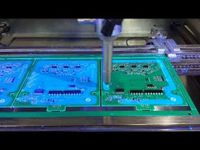
The testing expert measures thickness at various places using appropriate tools. This test provides information about the layer’s evenness. Lack of uniformity indicates a problem and is most common when manually applying the resin. This test examines the coating bonding strength.
PCB coating is a thin resin applied after mounting circuit boards with components. Here’s what you need to know about it.The spray method is either manual or fully automated. Manual spraying is slow and only suitable for low volumes. Industrial spray equipment operates automatically, coating PCBs in batches for high-volume production.This method involves exposing the coated board to ultraviolet (UV) light. The resin absorbs the photons, which triggers a polymerization reaction, causing it to cure (harden) almost instantly. UV-cured resins dry quickly.PCB coating protects assembled circuit boards, improving reliability in the application environment. Below, we explain what PCB coating is and its benefits.
Coatings are defined from a surface engineering point of view, and a range of coating processes are listed.
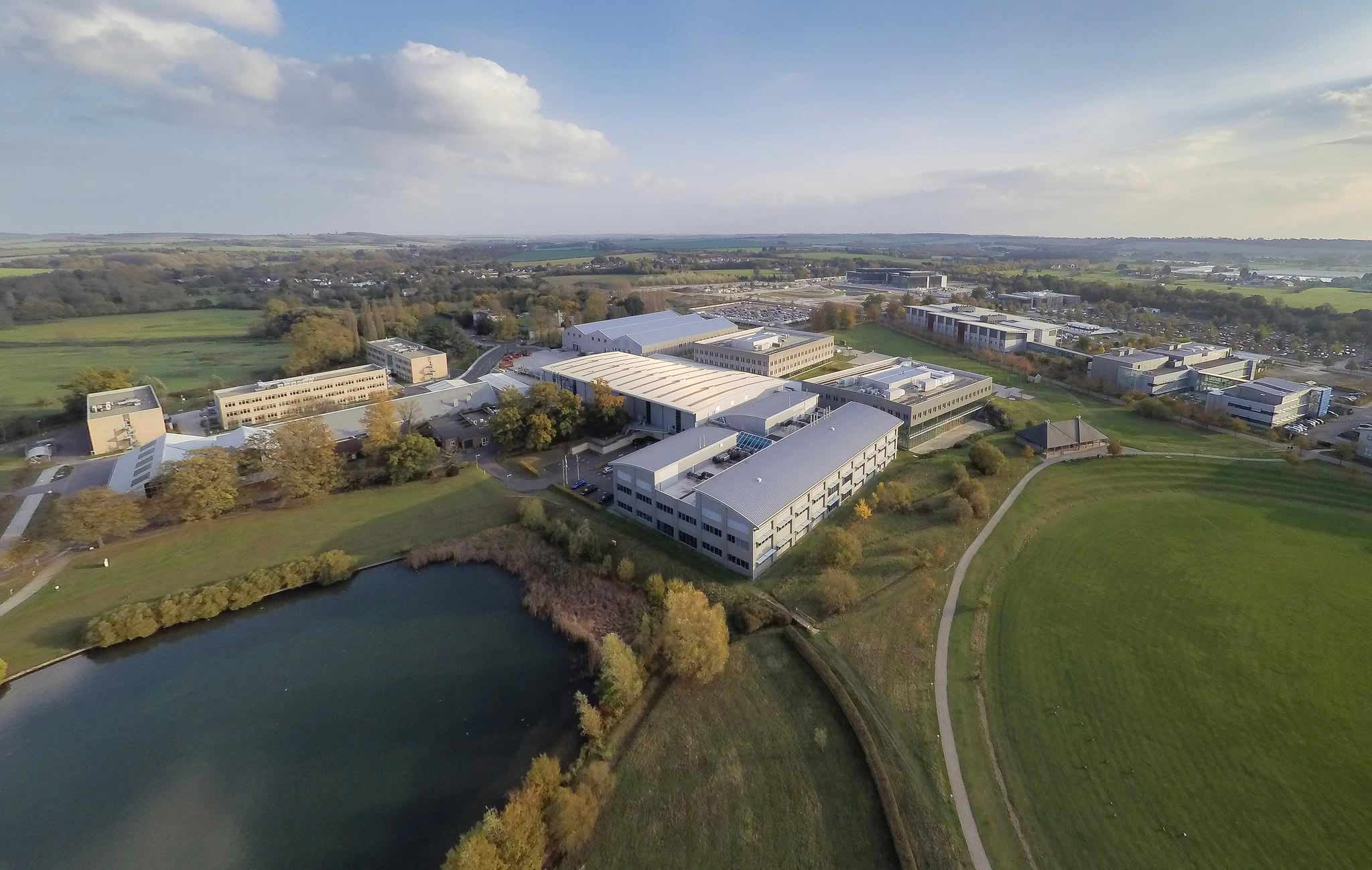
What is a coating?A coating is a covering that is applied to the surface of an object. The purpose of applying the coating may be decorative, functional, or both. Coatings are ubiquitous and can be found on walls, furniture, on all sorts of wires and printed circuits, the outside of houses ...
What is a coating?A coating is a covering that is applied to the surface of an object. The purpose of applying the coating may be decorative, functional, or both. Coatings are ubiquitous and can be found on walls, furniture, on all sorts of wires and printed circuits, the outside of houses and cars, and much more.Decorative coatings are mainly used for their color, texture or other visual property. Functional coatings are applied to change the surface properties of the substrate, such as adhesion, wettability, corrosion resistance, wear resistance and more.Coatings may be used in various processes, that are roughly divided into: vapor deposition, spraying, chemical and electrochemical techniques, roll-to-roll coating processes and other, less prominent techniques.Graphene's high resistivity can make for durable coatings that do not crack and are resistant to water and oil; its excellent electrical and thermal conductivity can be used to make various conductive paints, and a strong barrier effect can contribute to extraordinary anti-oxidant, scratch-resistant and anti-UVA coatings.
A coating is a substance applied to the surface of an object. This can serve decorative or protective purposes, or both.
Without coatings, many everyday objects would be impossible to use for long periods. The iron on a bridge, for instance, would rust within months if left uncoated. The wood of a window frame would begin to rot even quicker.If a coating is applied, however, both these objects can last for decades.Coatings also have significant aesthetic value. Because they are applied to an object’s surface, they are often the first thing about a product that users can see – and touch.Different materials have different properties; this means they require different types of coating. The coating should be closely aligned to the properties of the original object.
Melin Tool operates our own, IN-HOUSE PVD coating work center. This provides our customers with the highest level of consistency in coating composition and the most flexibility in coating selection. We’ve chosen Platit because of superior performance their coating on solid round cutting tools.
Melin Tool operates our own, IN-HOUSE PVD (Physical Vapor Deposition) coating work center in order to provide our customers with the highest level of consistency in coating composition and the most FLEXIBILITY in coating selection.We currently house several Platit machines, including the π311, which has more than 3 times the chamber capacity of our other units. We now have the ability to do next generation high performance triple coatings. Our equipment enables us to coat more tools, provide more coating types and to do so with shorter setups and changeover time.With Platit’s revolutionary and patented LARC® and CERC® technologies, Melin is able to provide far greater consistency from batch to batch. As well as, superior adhesion for its conventional coatings.We have no issues designing a unique, specially tailored coatings designed for enhancing performance in your specific applications.
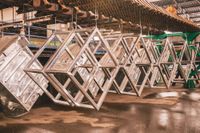
There are numerous types of metal finishes and coating, each designed to serve specific purposes and achieve particular outcomes. Below are some of the most common types with more information about how they’re made, what purpose they serve, and what makes them unique.
Explore the diverse world of metal coatings & finishes. Learn about the most common types, methods, & applications by reading our in-depth blog post today!In this blog post, we’ll explain the intricate universe of metal coatings, highlighting the various types, methods, finishes, and applications that enable us to mold metal into something truly extraordinary.Metal coatings are thin layers of material applied to the surface of metal, typically referred to as the substrate. These coatings serve various purposes, including protection, enhancement, and functionality. This protection is essential in extending the lifespan of metal products, especially those exposed to harsh conditions.Metal coatings and finishes are both surface treatments applied to metal materials to enhance their appearance, improve durability, and/or provide specific functional properties. Metal coatings typically involve the application of a thin layer of a different metal or alloy onto the surface of a substrate to increase durability or prevent corrosion.

To enhance their performance and prolong their service life, sonochemical coatings are applied to electronic components like sensors and microelectromechanical systems (MEMS), thus spurring the demand for sonochemical coatings. In May 2023, for example, the Japan Electronics and Information ...
To enhance their performance and prolong their service life, sonochemical coatings are applied to electronic components like sensors and microelectromechanical systems (MEMS), thus spurring the demand for sonochemical coatings. In May 2023, for example, the Japan Electronics and Information Technology Industries Association, a trade association based in Japan, reported that the production of consumer electronics reached 32,099 units.Stay ahead with our updated market reports featuring the latest on tariffs trade flows and supply chain transformations How Large Will the Sonochemical Coatings Market Size By 2025 Rapid expansion has been observed in recent years in the sonochemical coatings ...Press release - The Business Research Company - 2025 Sonochemical Coatings Industry Trends Report: Long-Term Outlook Through 2034 - published on openPR.comA prevailing trend surfacing in the sonochemical coatings market is the emphasis on product innovation. Most of the principal firms functioning in this market sector are targeting to offer innovative solutions to reinforce their market stance.
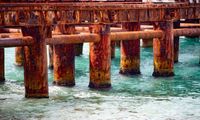
A new coating using NHC primer and UV-cured polymer protects iron from rust, cutting corrosion by 99.6% in saltwater tests.
Professor Elad Gross and his team at the Hebrew University of Jerusalem have now developed a coating that sticks – and protects iron for longer.Next comes a spin‑coated layer of bisphenol‑A ethoxylate diacrylate that locks into a cross‑linked polymer network (CPN) under ultraviolet light.Shipyards schedule dry‑dock visits years ahead because a three‑day coating job costs more than a transoceanic fuel bill.Bridges and concrete rebar stand to gain as well. Coated bars resist chloride attack for longer, delaying cracking and spalling that demand disruptive repairs.

The Bio-Based Coatings Market, valued at USD 12.7 billion in 2023, is projected to reach USD 29.4 billion by 2032, growing at an impressive CAGR of 9.75%
Email: [email protected] · Bio-based Coatings Market, Bio-based Coatings Market report, Bio-Based Coatings Market Share, Bio-Based Coatings Market Size · SNS Insider is approved by the Newstrail editorial board to provide news and insights from their latest industry reports.Bio-Based Coatings Market, valued at USD 12.7 billion in 2023, is projected to reach USD 29.4 billion by 2032, growing at an impressive CAGR of 9.75% during the forecast period 2024–2032. As industries worldwide pivot toward sustainability, bio-based coatings have emerged as an eco-friendly alternative to conventional petroleum-based solutions.The market’s growth is driven by stricter environmental regulations, growing consumer preference for sustainable products, and technological advancements enabling improved formulations. As industries including construction, automotive, packaging, and furniture increasingly demand environmentally responsible materials, bio-based coatings are becoming integral to meeting both performance requirements and regulatory standards.For instance, in 2023, the European Union reinforced its commitment to cut greenhouse gas emissions by 55% by 2030 under the European Green Deal. Such policies encourage manufacturers to adopt bio-based coatings, which significantly reduce environmental pollution.
Testimonials: See what our editors and authors say about Coatings. Impact Factor: 2.8 (2024); 5-Year Impact Factor: 3.0 (2024) subject Imprint Information get_app Journal Flyer Open Access ISSN: 2079-6412
Coatings 2025, 15(7), 779; https://doi.org/10.3390/coatings15070779 - 2 Jul 2025 ... Accurate detection of surface defects such as wear, cracks, and flaws in metallic components is critical for equipment reliability and longevity, representing a core challenge in surface integrity engineering. To solve the information loss, low estimation accuracy and poor noise immunity associated with [...] Read more.Coatings, an international, peer-reviewed Open Access journal.A SiO2-Al2O3-B2O3-CaO-MgO-Na2O glass-based protective lubricant coating was developed for Ti-6Al-4V alloy forging, featuring a fully non-toxic formulation. The coating consisted of a composite glass matrix formed by blending two phases with distinct softening temperatures, extending its operational window to 700–950 °C.The composite glass showed initial softening at 700 °C and complete melting at 800 °C, with contact angle measurements confirming superior wettability (θ < 90°) across the forging range (800~950 °C). With an increase in temperature, the surface tension of the composite glass melt decreased, and subsequently, the wettability of the composite glass melt was significantly improved. XRD revealed that the uncoated Ti-6Al-4V formed a 22 μm thick rutile TiO2 scale with a porous structure and interfacial cracks, while the coated sample retained an amorphous glass layer with no TiO2.

Learn more about the different coating composition and their properties to understand the different factors to consider when combining
An understanding of the process is required to develop a coating is useful when considering the composition and properties of any coating. The following explanation is from the viewpoint of the coatings development chemist.Whether a coating is an inhibitive primer or glossy topcoat, its formula consists of six basic components: binders, pigments, extenders or fillers, solvents, rheology modifiers, and special additives. The coatings chemist selects the types and quantities of each of these components, and combines them into a liquid form that changes to a solid film when applied to a substrate.Pigments are used in coatings to impart color and opacity (hiding) to the final film. There are two general types of pigments: inorganic such as metal oxides or combinations of oxides, and organic such as phthalocyanurates or quinacridones. Pigment selection can be quite complicated.The pH stability of the pigment, its UV resistance, its chemical resistance, particle size, and oil absorption must all be carefully selected to provide the desired properties. Improper selection can result in a coating that degrades or changes color as the pigments are attacked by acid rain, sunlight or heat.


The Performance Coatings Market, valued at USD 50.11 billion in 2023, is projected to reach USD 77.73 billion by 2032, growing at a CAGR of 5.00% from 2024 to
Email: [email protected] · Performance Coatings Market, Performance Coatings Market Report, Performance Coatings Market Share, Performance Coatings Market size · SNS Insider is approved by the Newstrail editorial board to provide news and insights from their latest industry reports.Performance Coatings Market, valued at USD 50.11 billion in 2023, is projected to reach USD 77.73 billion by 2032, growing at a CAGR of 5.00% from 2024 to 2032. Performance coatings, known for their protective and functional properties, are increasingly vital across industries such as automotive, construction, aerospace, marine, and heavy machinery.Driven by rapid urbanization, industrialization, and evolving environmental regulations, the market is witnessing significant innovation in both product formulation and coating technologies. From water-based and low-VOC coatings to specialized polyurethane and fluoropolymer types, manufacturers are introducing solutions tailored to meet the complex requirements of modern applications.A primary driver for the market is the rising demand from the construction sector, especially in developing regions experiencing rapid urbanization. Construction projects across commercial, industrial, and residential sectors increasingly rely on performance coatings for protection against UV radiation, moisture, and corrosion.
The chemical nature, coating characteristics and environmental issues of these four coating materials are described in this chapter. · What's New | About PCRC | Compliance Assistance | Regulations | Technical Info | News | Homeowners | Search | Disclaimer | Home
In order to achieve the desired characteristics from the thin film, the coating material fon-nulation must be carefully considered in relation to the part characteristics, surface preparation, application technique and curing method.Pigments Pigments are defmed as any insoluble solid in coating materials. Pigments are typically the colorant portion of a coating material, but can also perform other functions. Some pigments provide corrosion protection, stability in ultraviolet (UV) light, or protection from mold, mildew or bacteria.Non-pigment additives include stabilizers to block attacks of ultraviolet light or heat, curing additives to speed up the crosslinking reaction, co-solvents to increase viscosity, or plasticizers to improve uniform coating.The carrier fluid allows the coating material to flow and be applied by methods such as spraying and dipping. This component may be in the coating formulation before application, but evaporates afterwards to allow the solid materials to immobilize and form the thin protective film.
Founded in 1921, Tnemec is one of the largest privately held protective coatings manufacturers in North America. Our coatings protect surfaces from Los Angeles to Philadelphia, Shanghai to San Juan, and every order we make is delivered with the expertise of our veteran team and the history ...
Request Information · Color Tool · Product Documents · China · Global Contacts Swatch Packet · Search · Menu · Learn More · Tnemec Company, Inc. specializes in protecting surfaces and structures from corrosion with high-performance coatings and linings.Founded in 1921, Tnemec is one of the largest privately held protective coatings manufacturers in North America. Our coatings protect surfaces from Los Angeles to Philadelphia, Shanghai to San Juan, and every order we make is delivered with the expertise of our veteran team and the history they carry with them.For nearly 100 years, Tnemec protective coatings and linings have been sold exclusively through a select network of local independent sales representatives who are readily available to help with everything from quotes and pricing to specification and color assistance.Our representatives are well-versed in corrosion protection, with unmatched industry knowledge and the ability to recommend products based on each project’s particular conditions and location. Whether you know the product you need or need a little help choosing the right one, our representatives can help you purchase or specify Tnemec coating systems, and will continue to support you and your team until every coat has been applied.

/PRNewswire/ -- The report "Industrial Coatings Market by type (Acrylic, Alkyd, Polyester, Polyurethane, Epoxy, Fluoropolymer), Technology (Solventborne...
DELRAY BEACH, Fla., June 30, 2025 /PRNewswire/ -- The report "Industrial Coatings Market by type (Acrylic, Alkyd, Polyester, Polyurethane, Epoxy, Fluoropolymer), Technology (Solventborne Coatings, Waterborne Coatings, Powder Coatings), End-use Industry (General Industrial), and Region - Global Forecast to 2030", industrial coatings market size was estimated at USD 112.04 billion in 2024 and is projected to reach USD 142.35 billion by 2030, at a CAGR of 4.12% between 2025 and 2030.The growing popularity of industrial coatings is due to their essential protection, durability, and performance enhancements for equipment, machinery, and infrastructure across various industries. Given businesses' desire for longer product life and reduced maintenance needs, there is a shift toward highly advanced coatings that resist corrosion, wear, and environmentally harsh conditions.As the world adopts stricter regulations concerning emissions and environmental degradation, firms are transitioning to greener technologies, including the use of waterborne and powder-based coating systems that emit low levels of volatile organic compounds (VOCs).These options are more sustainable and align with the concept of a circular economy, fostering safer and more eco-friendly production practices. Manufacturers in the industry are currently adopting coatings that exceed regulatory standards to promote long-term energy and cost savings.
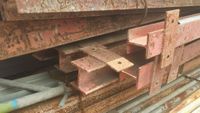
The coating, if widely adopted, promises to significantly lower upkeep costs and increase the durability of iron-based products in construction, transportation, and manufacturing.
A study conducted some time ago indicated that the global expense of corrosion amounted to a whopping US$2.5 trillion. Though protective coatings are available, many frequently break down, failing to provide lasting protection.Reportedly, the team used the combination of hydrogen permeation-based potentiometry (HPP) and electrochemical impedance spectroscopy (EIS). This technique could lead to precise measurement of degradation right where the organic coating meets the metal.A new dual-layer coating has been developed that offers 99.6% protection against iron corrosion.Right: uncoated iron. Left: coated iron. Both shown after exposure to rust-promoting conditions.
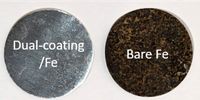
By reducing the need for frequent repairs and replacements, this coating could also contribute to more sustainable and cost-effective material use. More information: Linoy Amar et al, Self‐Assembled Monolayer of N‐Heterocyclic Carbene as a Primer in a Dual‐Layer Coating for Corrosion ...
By reducing the need for frequent repairs and replacements, this coating could also contribute to more sustainable and cost-effective material use. More information: Linoy Amar et al, Self‐Assembled Monolayer of N‐Heterocyclic Carbene as a Primer in a Dual‐Layer Coating for Corrosion Protection on Iron, Angewandte Chemie International Edition (2025).Journal information: Angewandte Chemie International Edition ... Citation: Novel coating shields iron from rust with 99.6% efficiency (2025, June 10) retrieved 1 July 2025 from https://phys.org/news/2025-06-coating-shields-iron-rust-efficiency.htmlApart from any fair dealing for the purpose of private study or research, no part may be reproduced without the written permission. The content is provided for information purposes only. Explore further Self-healing coating lets Nd-Fe-B magnets resist saltwater, ice and mechanical damageResearchers have developed a highly effective dual-layer coating that provides 99.6% protection against iron corrosion. The breakthrough combines a thin molecular primer with a durable polymer layer, creating a strong, long-lasting barrier against rust. This innovation could significantly reduce maintenance costs and extend the lifespan of iron-based materials used in construction, transportation, and manufacturing.
A coating is a covering that is applied to the surface of an object, or substrate. The purpose of applying the coating may be decorative, functional, or both. Coatings may be applied as liquids, gases or solids e.g.
A coating is a covering that is applied to the surface of an object, or substrate. The purpose of applying the coating may be decorative, functional, or both. Coatings may be applied as liquids, gases or solids e.g. powder coatings. Paints and lacquers are coatings that mostly have dual uses, ...Paints and lacquers are coatings that mostly have dual uses, which are protecting the substrate and being decorative, although some artists paints are only for decoration, and the paint on large industrial pipes is for identification (e.g. blue for process water, red for fire-fighting control) in addition to preventing corrosion.In other cases the coating adds a completely new property, such as a magnetic response or electrical conductivity (as in semiconductor device fabrication, where the substrate is a wafer), and forms an essential part of the finished product.Coatings can be both decorative and have other functions. A pipe carrying water for a fire suppression system can be coated with a red (for identification) anticorrosion paint. Most coatings to some extent protect the substrate, such as maintenance coatings for metals and concrete.A major coating application is to protect metal from corrosion. Automotive coatings are used to enhance the appearance and durability of vehicles. These include primers, basecoats, and clearcoats, primarily applied with spray guns and electrostatically. The body and underbody of automobiles receive some form of underbody coating.


Moreover, the rise of nanotechnology and smart coatings presents untapped potential for advanced, intelligent surface treatments across sectors. Reasons to Buy the Report ✔ Gain a comprehensive understanding of current and future market trends and opportunities. ✔ Access valuable data on market size, share, and forecast from 2024 to 2031. ✔ Identify high-growth segments and regions to inform ...
Moreover, the rise of nanotechnology and smart coatings presents untapped potential for advanced, intelligent surface treatments across sectors. Reasons to Buy the Report ✔ Gain a comprehensive understanding of current and future market trends and opportunities. ✔ Access valuable data on market size, share, and forecast from 2024 to 2031. ✔ Identify high-growth segments and regions to inform strategic investments.Notice: This Content doesn't contains full Information of the Report please fill the form (via link) and get all insightful information in just one click on PDF with latest update with chart and Table of Content Coherent Market Insights added a new research report on Global Hydrophobic Coatings Market research Report 2020.While generating this Hydrophobic Coatings market analysis document, all the necessities and requirements of the businesses have been considered ... Global Info Research offers a latest published report on Hydrophobic Glass Market Analysis and Forecast 2019-2025 delivering key insights and providing a competitive advantage to clients through a detailed report.Hydrophobic coatings materials that repel water from surfaces are becoming increasingly vital across a range of industries From automotive and aerospace to healthcare and electronics these coatings play a critical role in enhancing durability reducing maintenance and improving product performance ...
Momentive’s specialty coatings portfolio offers enhancement and protection for an array of hardcoat, weatherstrip, anti-fog, release and electronic applications.
Log in or create a new account to access profile information.



